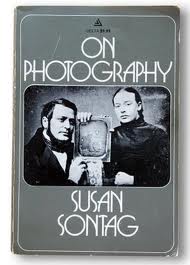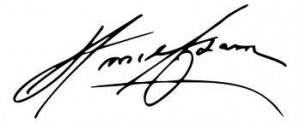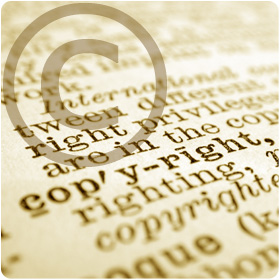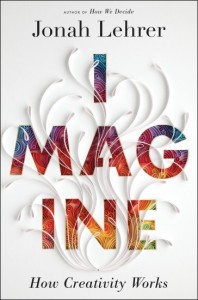 The U.S. educational system has devoted some of its energies in recent years to promulgating an oxymoron — “self-plagiarism,” or passing off one’s own work as one’s own work — as a means of intervening in the tendency of some students to recycle their own completed homework assignments and term papers, for the purpose of lightening their workloads.
The U.S. educational system has devoted some of its energies in recent years to promulgating an oxymoron — “self-plagiarism,” or passing off one’s own work as one’s own work — as a means of intervening in the tendency of some students to recycle their own completed homework assignments and term papers, for the purpose of lightening their workloads.
I consider this campaign misguided and counterproductive, because it muddies the waters around the concept of plagiarism: the theft of another’s labor and of the credit due to him or her for it. Teachers and educational institutions of course have not only every right but a duty to prevent such thieving and punish anyone who puts his or her name on someone else’s work. I can recall an incident of plagiarism that got a student expelled at Stuyvesant High School during my junior year there in 1959, so that effort extends back more than half a century, and doesn’t restrict itself to college-level students.
Colleges and universities have actually devised software to enabling the identification of material plagiarized by students via the web; that’s fine with me. I say this as a man whose father began his career in publishing in the early 1940s by running a service providing ghost-written term papers to students at New York University and other New York City schools, and got arrested for doing so.

We also have good pedagogical reasons for requiring students to produce new work in each course they take. We assume, usually correctly, that they need practice to hone their skills at researching, organizing, thinking, and writing. Those abilities won’t get advanced if students recycle the same work among different faculty members in different courses. Note that we already have a perfectly good and commonly understood word — recycling — to describe that action; a prohibition against recycling one’s own essays and papers, in whole or in part, would not take much definition or explaining. Certainly the problem doesn’t mandate the coining of an awkward neologism, “self-plagiarism,” in order to get the point across.

Chastising students for repurposing their own work while assigning them books like Sherwood Anderson’s Winesburg, Ohio, Roland Barthes’s Mythologies, and Susan Sontag’s On Photography — all of them compilations of previously published material by those authors — involves transmitting to them a nuanced understanding of when such reuses are permissible and when they’re wrong. That’s made harder, not easier, by applying the loaded label “self-plagiarism” to the act, as that can then spill over into the students’ perception of writers’ legal and professionally appropriate rights-licensing activities. So headlines such as that placed by the website Plagiarism Today on Jonathan Bailey’s September 7, 2011 story — “Self-Plagiarism: Ethical Shortcut or Moral Scourge?” — become part of the problem, not part of the solution.
There They Go Again
As I noted in my previous post, this new term both confuses the issue and trivializes the concept of plagiarism. We have enacted laws against plagiarism, after all; I can’t imagine a law against “self-plagiarism,” a perfectly legitimate and justifiable activity in most situations, problematic and prohibited in only a few. Now that the term has started to spill over into popular usage, due to the high-profile case of Jonah Lehrer, let’s imagine a few potential news stories based on this concept:

President Barack Obama self-plagiarizing his standard comments to infants as he holds a baby while greeting guests during an Independence Day celebration on the South Lawn of the White House, July 4, 2012. (Official White House Photo by Pete Souza)
• “On the campaign trail today, President Barack Obama and his Vice-President, Joe Biden, as well as their opponents, Mitt Romney and Paul Ryan, self-plagiarized extensively, delivering basically the same speeches at four different locations for Obama-Biden and five for Romney-Ryan. Meanwhile, their respective spokespersons self-plagiarized just as extensively on the talk shows, repeating the same explanations of the candidates’ policies and programs before different audiences.”
• “The Microsoft Corporation self-plagiarized globally today, running the same ad for the latest release of its popular Office Suite in countless different media outlets around the globe.”
 • “The head of the Internal Revenue Service today authorized the agency to self-plagiarize by sending identical form letters to millions of taxpayers who requested extensions for their 2012 filings.”
• “The head of the Internal Revenue Service today authorized the agency to self-plagiarize by sending identical form letters to millions of taxpayers who requested extensions for their 2012 filings.”
• “Garry Trudeau, author and illustrator of the popular ‘Doonesbury’ cartoon, self-plagiarized yet again today by conspiring with Universal Press Syndicate to license publication of this week’s episode in almost 1,400 newspapers worldwide.”
 • “Reaching out from beyond the grave, the late Ansel Adams self-plagiarized once more by permitting the trust he created during his lifetime to grant permission for yet another use of his classic image ‘Moonrise over Hernandez.’ Including his posthumous record, Adams has now self-plagiarized this image over 5000 times in various media.”
• “Reaching out from beyond the grave, the late Ansel Adams self-plagiarized once more by permitting the trust he created during his lifetime to grant permission for yet another use of his classic image ‘Moonrise over Hernandez.’ Including his posthumous record, Adams has now self-plagiarized this image over 5000 times in various media.”
Feel free to devise your own versions of this silliness.
The Real issues
But seriously, folks . . . In specific situations, republishing part or all of something you’ve written is wrong. Forinstance:
 • As I noted in my first post in this series, if an author has actually sold or transferred copyright and subsidiary rights to someone else, the new copyright holder becomes the legal “author” of that work. The original maker thereof cannot reuse any of it without the express written permission of the new owner of those rights. Failure to observe the law in this regard does not call for inventive nomenclature; it’s a violation of copyright law.
• As I noted in my first post in this series, if an author has actually sold or transferred copyright and subsidiary rights to someone else, the new copyright holder becomes the legal “author” of that work. The original maker thereof cannot reuse any of it without the express written permission of the new owner of those rights. Failure to observe the law in this regard does not call for inventive nomenclature; it’s a violation of copyright law.
• A writer’s contract with a publisher sometimes mandates that all the material provided will be “new and previously unpublished,” or words to that effect. Thus, even if the author retains the copyright and subsidiary-rights licensing rights to his or her already published work, repurposing such material may abrogate the writer’s written or verbal agreement with another publisher. Here again we have a viable name for that activity: breach of contract. That’s where, in my professional opinion, Jonah Lehrer went wrong during his truncated stint as a blogger at The New Yorker.
 • Publication in scholarly journals operates on a different set of premises from publication in other kinds of periodicals. Academic journals, research-based, serve to establish the official “literature” of a given field, the existing body of knowledge to which new papers supposedly contribute. Some of those contributions fill major gaps in the literature, some fill minor ones. But the goal of all involved, presumably, is to avoid duplication of the research of others —including oneself. Publishing basically the same research more than once perturbs the field’s research base. Since many academic journals require that the work be new and previously unpublished, and also demand transfer of copyright from authors, publishing variations on the same paper in multiple scholarly journals can violate copyright, breach contract, and also do a disservice to one’s colleagues in the field. Again, we have existing terms for all that, including breach of professional ethics.
• Publication in scholarly journals operates on a different set of premises from publication in other kinds of periodicals. Academic journals, research-based, serve to establish the official “literature” of a given field, the existing body of knowledge to which new papers supposedly contribute. Some of those contributions fill major gaps in the literature, some fill minor ones. But the goal of all involved, presumably, is to avoid duplication of the research of others —including oneself. Publishing basically the same research more than once perturbs the field’s research base. Since many academic journals require that the work be new and previously unpublished, and also demand transfer of copyright from authors, publishing variations on the same paper in multiple scholarly journals can violate copyright, breach contract, and also do a disservice to one’s colleagues in the field. Again, we have existing terms for all that, including breach of professional ethics.
 • (For a clear analysis of the problems created in a scholarly discipline by such repetitions, see “A Study of Self-Plagiarism,” published Perry A. Zirkel at Inside Higher Ed on December 3, 2010. Pamela Samuelson’s thoughtful article, “Self-plagiarism or fair use,” in the August 1994 issue of Communications of the ACM, is also helpful. To combat such practices, there’s the freeware SPlaT Tool, developed for use by the scientific community but useful in any discipline for detecting instances when “an author reuses portions of their previous writings in subsequent research papers.” iThenticate, available via single-use fee or institutional subscription, is another such service. I understand and agree with the purpose of these apps, but wish they didn’t label the issue “self-plagiarism.” iThenticate’s “white paper,” “The Ethics of Self-Plagiarism,” exemplifies the confusing nature of this term.)
• (For a clear analysis of the problems created in a scholarly discipline by such repetitions, see “A Study of Self-Plagiarism,” published Perry A. Zirkel at Inside Higher Ed on December 3, 2010. Pamela Samuelson’s thoughtful article, “Self-plagiarism or fair use,” in the August 1994 issue of Communications of the ACM, is also helpful. To combat such practices, there’s the freeware SPlaT Tool, developed for use by the scientific community but useful in any discipline for detecting instances when “an author reuses portions of their previous writings in subsequent research papers.” iThenticate, available via single-use fee or institutional subscription, is another such service. I understand and agree with the purpose of these apps, but wish they didn’t label the issue “self-plagiarism.” iThenticate’s “white paper,” “The Ethics of Self-Plagiarism,” exemplifies the confusing nature of this term.)
 • Lehrer also committed another faux pas; he embarrassed his publisher by recycling material that many readers of The New Yorker would likely have read already in his best-selling spring 2012 book Imagine: How Creativity Works. One of the cardinal rules for multipurposing one’s work as a writer — a process referred to as self-syndication by those who (like myself) are too specialized to attract the attention of syndication services — concerns taking care not to put the same material before the same readership in multiple competing outlets.
• Lehrer also committed another faux pas; he embarrassed his publisher by recycling material that many readers of The New Yorker would likely have read already in his best-selling spring 2012 book Imagine: How Creativity Works. One of the cardinal rules for multipurposing one’s work as a writer — a process referred to as self-syndication by those who (like myself) are too specialized to attract the attention of syndication services — concerns taking care not to put the same material before the same readership in multiple competing outlets.
Portions of Lehrer’s Imagine appeared originally in feature articles in Wired and the New York Times Magazine. Other articles of his have not yet made it into book form but have appeared in other high-profile, wide-distribution periodicals, such as the Wall Street Journal. By recycling chunks of that material — most of it initially published within the last three years — into blog posts for The New Yorker, whose readership overlaps substantially with those other periodicals, and whose readers were likely to have read his new book as well, Lehrer ran an extremely high risk that someone would notice the duplications.

Jonah Lehrer, Imagine (2012), cover.
Unless he’s extremely naïve about the workings of the publishing world and the internet, Lehrer willfully went cruising for a bruising. New Yorker essays have often evolved into books; the magazine prides itself on that. But unlike, say, Rolling Stone, the magazine doesn’t normally license excerpts from published books, print syndicated material, or otherwise use previously published writing.
Indeed, part of its reputation rests on the fact that what it publishes gets specifically and exclusively written for it. Hard to believe Lehrer didn’t know he’d overstepped the bounds. I can understand how, under the pressure of a deadline, that could happen once, but doing it repeatedly meant pushing his luck, and eventually it pushed back.
(To be continued.)
(Part 1 I 2 I 3)
•
This post supported by a donation from the Estate of Lyle Bongé.
•
 Special offer: If you want me to either continue pursuing a particular subject or give you a break and (for one post) write on a topic — my choice — other than the current main story, make a donation of $50 via the PayPal widget below, indicating your preference in a note accompanying your donation. I’ll credit you as that new post’s sponsor, and link to a website of your choosing. Include a note with your snail-mail address (or email it to me separately) for a free signed copy of my 1995 book Critical Focus!
Special offer: If you want me to either continue pursuing a particular subject or give you a break and (for one post) write on a topic — my choice — other than the current main story, make a donation of $50 via the PayPal widget below, indicating your preference in a note accompanying your donation. I’ll credit you as that new post’s sponsor, and link to a website of your choosing. Include a note with your snail-mail address (or email it to me separately) for a free signed copy of my 1995 book Critical Focus!
 As a bonus, I’ll include a copy of The Silent Strength of Liu Xia, the catalog of the 2012-13 touring exhibition of photos by the dissident Chinese photographer, artist, and poet, currently in her sixth year of extralegal house arrest in Beijing. The only publication of her photographic work, it includes all 26 images in the exhibition, plus another 14 from the same series, along with essays by Guy Sorman, Andrew Nathan, and Cui Weiping, professor at the Beijing Film Academy.
As a bonus, I’ll include a copy of The Silent Strength of Liu Xia, the catalog of the 2012-13 touring exhibition of photos by the dissident Chinese photographer, artist, and poet, currently in her sixth year of extralegal house arrest in Beijing. The only publication of her photographic work, it includes all 26 images in the exhibition, plus another 14 from the same series, along with essays by Guy Sorman, Andrew Nathan, and Cui Weiping, professor at the Beijing Film Academy.
Self-Plagiarism: Oxymoron Invasion (3)
I consider this campaign misguided and counterproductive, because it muddies the waters around the concept of plagiarism: the theft of another’s labor and of the credit due to him or her for it. Teachers and educational institutions of course have not only every right but a duty to prevent such thieving and punish anyone who puts his or her name on someone else’s work. I can recall an incident of plagiarism that got a student expelled at Stuyvesant High School during my junior year there in 1959, so that effort extends back more than half a century, and doesn’t restrict itself to college-level students.
Colleges and universities have actually devised software to enabling the identification of material plagiarized by students via the web; that’s fine with me. I say this as a man whose father began his career in publishing in the early 1940s by running a service providing ghost-written term papers to students at New York University and other New York City schools, and got arrested for doing so.
We also have good pedagogical reasons for requiring students to produce new work in each course they take. We assume, usually correctly, that they need practice to hone their skills at researching, organizing, thinking, and writing. Those abilities won’t get advanced if students recycle the same work among different faculty members in different courses. Note that we already have a perfectly good and commonly understood word — recycling — to describe that action; a prohibition against recycling one’s own essays and papers, in whole or in part, would not take much definition or explaining. Certainly the problem doesn’t mandate the coining of an awkward neologism, “self-plagiarism,” in order to get the point across.
Chastising students for repurposing their own work while assigning them books like Sherwood Anderson’s Winesburg, Ohio, Roland Barthes’s Mythologies, and Susan Sontag’s On Photography — all of them compilations of previously published material by those authors — involves transmitting to them a nuanced understanding of when such reuses are permissible and when they’re wrong. That’s made harder, not easier, by applying the loaded label “self-plagiarism” to the act, as that can then spill over into the students’ perception of writers’ legal and professionally appropriate rights-licensing activities. So headlines such as that placed by the website Plagiarism Today on Jonathan Bailey’s September 7, 2011 story — “Self-Plagiarism: Ethical Shortcut or Moral Scourge?” — become part of the problem, not part of the solution.
There They Go Again
As I noted in my previous post, this new term both confuses the issue and trivializes the concept of plagiarism. We have enacted laws against plagiarism, after all; I can’t imagine a law against “self-plagiarism,” a perfectly legitimate and justifiable activity in most situations, problematic and prohibited in only a few. Now that the term has started to spill over into popular usage, due to the high-profile case of Jonah Lehrer, let’s imagine a few potential news stories based on this concept:
President Barack Obama self-plagiarizing his standard comments to infants as he holds a baby while greeting guests during an Independence Day celebration on the South Lawn of the White House, July 4, 2012. (Official White House Photo by Pete Souza)
• “On the campaign trail today, President Barack Obama and his Vice-President, Joe Biden, as well as their opponents, Mitt Romney and Paul Ryan, self-plagiarized extensively, delivering basically the same speeches at four different locations for Obama-Biden and five for Romney-Ryan. Meanwhile, their respective spokespersons self-plagiarized just as extensively on the talk shows, repeating the same explanations of the candidates’ policies and programs before different audiences.”
• “The Microsoft Corporation self-plagiarized globally today, running the same ad for the latest release of its popular Office Suite in countless different media outlets around the globe.”
• “Garry Trudeau, author and illustrator of the popular ‘Doonesbury’ cartoon, self-plagiarized yet again today by conspiring with Universal Press Syndicate to license publication of this week’s episode in almost 1,400 newspapers worldwide.”
Feel free to devise your own versions of this silliness.
The Real issues
But seriously, folks . . . In specific situations, republishing part or all of something you’ve written is wrong. Forinstance:
• A writer’s contract with a publisher sometimes mandates that all the material provided will be “new and previously unpublished,” or words to that effect. Thus, even if the author retains the copyright and subsidiary-rights licensing rights to his or her already published work, repurposing such material may abrogate the writer’s written or verbal agreement with another publisher. Here again we have a viable name for that activity: breach of contract. That’s where, in my professional opinion, Jonah Lehrer went wrong during his truncated stint as a blogger at The New Yorker.
Portions of Lehrer’s Imagine appeared originally in feature articles in Wired and the New York Times Magazine. Other articles of his have not yet made it into book form but have appeared in other high-profile, wide-distribution periodicals, such as the Wall Street Journal. By recycling chunks of that material — most of it initially published within the last three years — into blog posts for The New Yorker, whose readership overlaps substantially with those other periodicals, and whose readers were likely to have read his new book as well, Lehrer ran an extremely high risk that someone would notice the duplications.
Jonah Lehrer, Imagine (2012), cover.
Unless he’s extremely naïve about the workings of the publishing world and the internet, Lehrer willfully went cruising for a bruising. New Yorker essays have often evolved into books; the magazine prides itself on that. But unlike, say, Rolling Stone, the magazine doesn’t normally license excerpts from published books, print syndicated material, or otherwise use previously published writing.
Indeed, part of its reputation rests on the fact that what it publishes gets specifically and exclusively written for it. Hard to believe Lehrer didn’t know he’d overstepped the bounds. I can understand how, under the pressure of a deadline, that could happen once, but doing it repeatedly meant pushing his luck, and eventually it pushed back.
(To be continued.)
(Part 1 I 2 I 3)
•
This post supported by a donation from the Estate of Lyle Bongé.
•